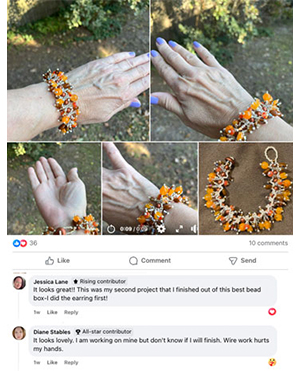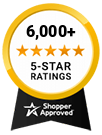- Jewelry-Making Supplies ▾
Design Jewelry with Confidence!
Seed Beads
Thread, Wire, & Stringing Materials
Athenacast Findings & Components
Everything Else
- Kits & Collections ▾
Assemble Your World
Kits & Collections
- Subscriptions ▾
Want monthly Beading Happiness?
Subscriptions
- Learn to Make ▾
Want to learn more?
- Discounts & Deals ▾
Explore Today's Promotions!
- Jewelry-Making Supplies
- Kits & Collections
- Subscriptions
- Learn to Make
- Discounts & Deals
-
Seed Beads
Thread, Wire, & Stringing Materials
Findings & Components
Everything Else
-
Kits & Collections
-
Subscriptions
- Home
- How to Make Jewelry
- Better Beader Episodes
- Beading Units of Measurements
Beading Units of Measurements

Watch the Video Tutorial
Watch the Video Tutorial
Need Any Extra Materials?
Need Any Extra Materials?
Need Any Extra Materials?
Need Any Extra Materials?
Episode Transcript
Episode Transcript
Introduction
Understanding units of measurement is crucial for any beader, whether you're a beginner or a seasoned pro. In Better Beader Episode 23, the hosts from Potomac Beads dive into the essential beading units of measurement, providing valuable insights and tips to help you navigate the world of beads with confidence. In this article, we'll recap the key points from the episode and offer a handy reference guide for your beading projects.
Bead Sizes
One of the most important units of measurement in beading is the bead size. The hosts explain that bead sizes are typically measured in millimeters (mm) and range from tiny seed beads to larger focal beads. Some common bead sizes include:
- Seed beads (e.g., 15/0, 11/0, 8/0)
- 4mm rounds
- 6mm rounds
- 8mm rounds
- 10mm rounds
Understanding bead sizes is essential for ensuring your project turns out as intended and for making accurate material calculations.
Stringing Materials
The episode also covers the various stringing materials available and their respective measurements. The hosts discuss:
- Thread (e.g., Nymo, KO, Fireline)
- Beading wire (e.g., Soft Flex, Beadalon)
- Stretch cord
- Leather and waxed cotton cord
Each stringing material has its own thickness or diameter, which is typically measured in millimeters (mm) or inches. It's important to choose the right thickness for your project, considering the size of your beads and the desired drape of the finished piece.
Findings & Tools
Findings, such as clasps, jump rings, and earring hooks, also have their own units of measurement. The hosts explain that findings are often measured in millimeters (mm) and can vary in size and thickness. When selecting findings for your project, make sure they are compatible with your beads and stringing materials.
The episode also touches on essential beading tools and their measurements, such as:
- Beading needles (sized by thickness, e.g., 10, 12, 13)
- Crimping pliers (sized by mm)
- Bead mats (measured in inches)
Tips & Tricks
Throughout the episode, the hosts share valuable tips and tricks for working with beading units of measurement. Some key takeaways include:
- Always double-check your measurements to avoid costly mistakes
- Use a bead board or ruler to measure your designs accurately
- When in doubt, refer to the manufacturer's specifications or consult a beading chart
- Don't be afraid to experiment with different sizes and materials to achieve your desired look
Conclusion
By understanding the essential beading units of measurement, you'll be well-equipped to tackle any beading project with confidence. Remember to consider bead sizes, stringing materials, findings, and tools when planning your designs, and don't hesitate to refer back to this guide as needed. Happy beading!
Join Our Growing Community
Join Our Growing Community




Our Testimonials
Our Testimonials
- 55997 (83.8%)
- 4814 (11.4%)
- 3295 (4.1%)
- 230 (0.4%)
- 124 (0.3%)
- Favorite Reviews
- Highest to Lowest
- Newest to Oldest
- All Ratings
- 5 ★ Reviews
- 4 ★ Reviews
- 3 ★ Reviews
- 2 ★ Reviews
- 1 ★ Reviews
Loading...
Only Visible on Admin Mode
Item Description
Designer's Material List
Project Steps
Measuring Bead Sizes: Use millimeters to determine the size of beads, and understand how many beads fit in a 16-inch strand based on their millimeter size.
Weighing Beads: Convert between grams and ounces to understand how many beads are in a package.
Liquid Measurements: Use milliliters and fluid ounces to measure the amount of liquid adhesives or finishes you need.
Buying Findings in Bulk: Understand what a gross measurement means for buying findings like ear wires.
Crystal Sizes: Learn the difference between pearl plate (pp) and stone size (ss) for measuring crystals and flatbacks.
Highest Quality
Products
100% Money
Back Guarantee
Fast
Shipping
Best Teaching &
Customer Service
You'll want these emails...
Get Free Projects & Inspiration
Get Free Projects & Inspiration
- Bullet 1
- Bullet 2
- Bullet 3
Copyright © PotomacBeads









